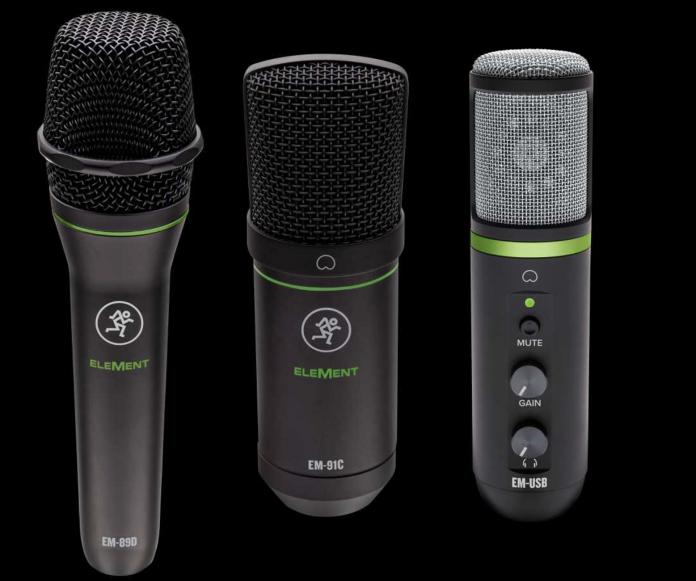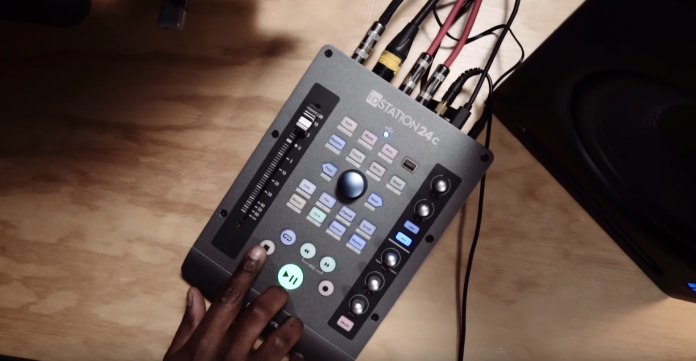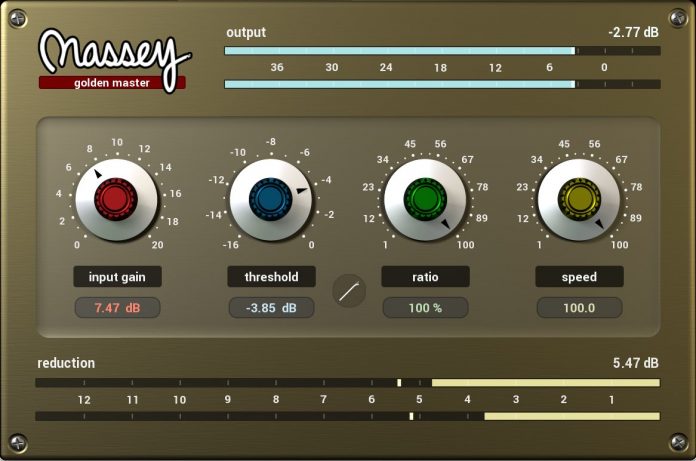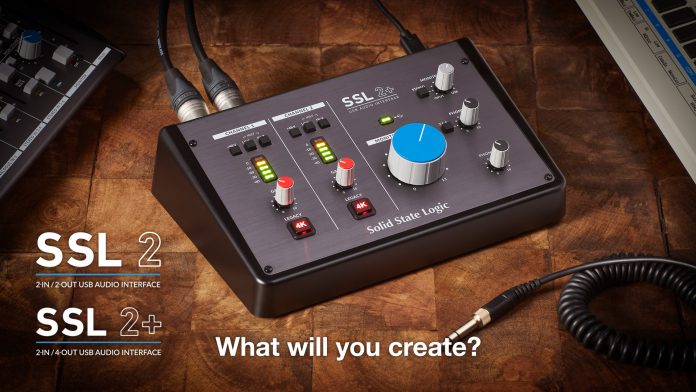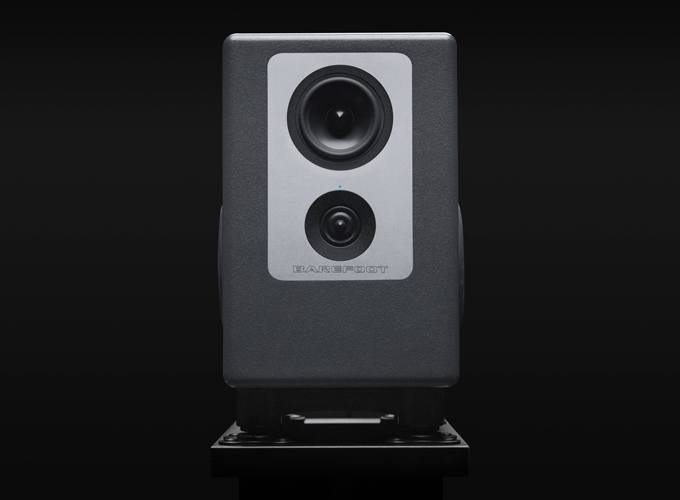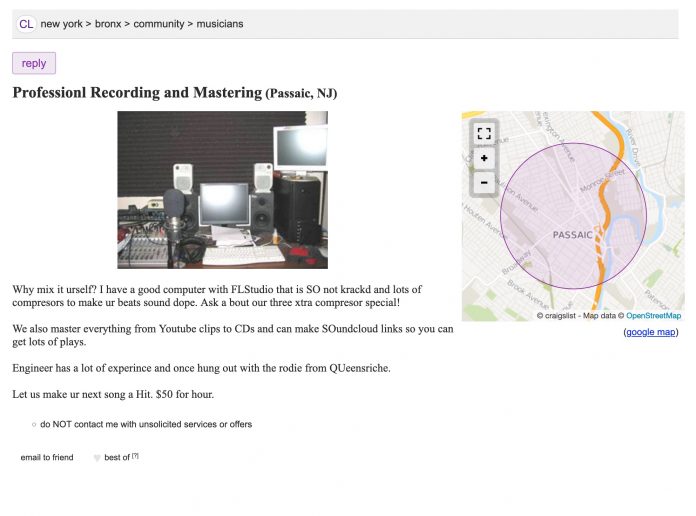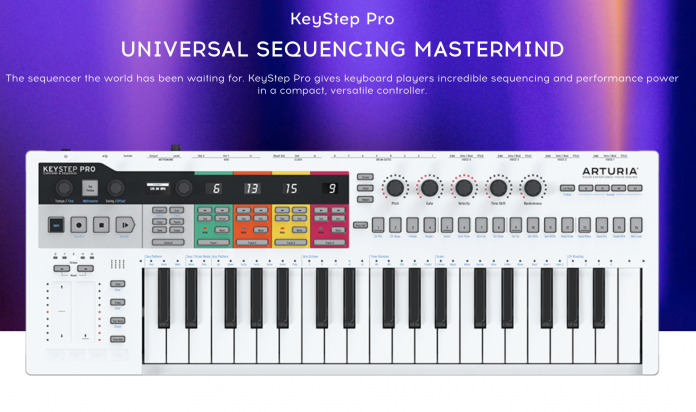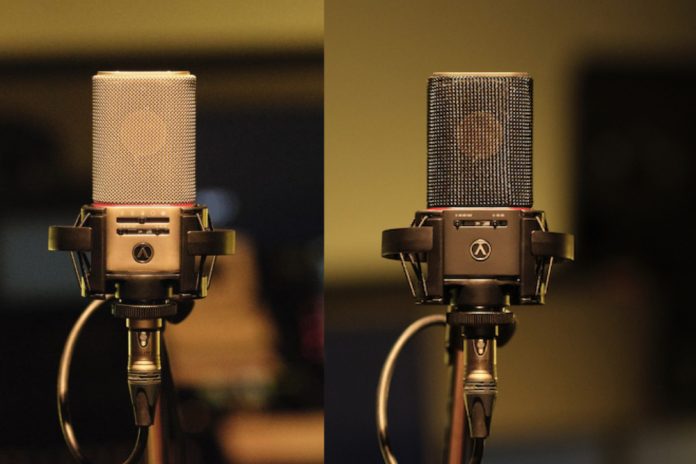So you’ve notched a few years under your belt as an audio engineer…
You’ve been recording for friends, acquaintances and friends-of-acquaintances.They’re all happy with the results, one even referred you to some friends. You’ve mixed some cuts for a local post-rock band, polished some EDM mixes, edited a local voiceover artist and even tried your hands at mastering your own demo. People told you that it sounded “pretty badass” and that it “hangs in there” with everything else they’re hearing on Spotify or Soundcloud.
With accolades like this, the question in your mind isn’t so much “should I do this professionally?” – it’s “why haven’t I done it yet?” You’ve got a decent setup. You invested $600 in dedicated studio monitors and almost another $1000 on your interface and a couple of mics. You’ve got a decent collection of plug-ins, too. I mean, yeah, you might be still “evaluating” a couple, but when the money comes rolling in you’re going to go legit, right?.
Okay, let’s say you’ve progressed beyond the “n00b” caricature above. You’ve been at this a while. You whip ProTools like a rented mule. You’ve sessioned at some decent studios, had a few credits on some decent records and you’ve amassed a respectable collection of solid equipment. Somehow you manage to balance your projects with a day job. You stay busy, your clients love your work and, for lack of a better way of saying it, you “know your shit”.
But before you put in that business card order let’s remember one very key thing: A countless many have tried before you. A few have found moderate, continued success. Most however, have not. And those who failed died on the cross of vastly overstating their abilities while overestimating the market demand. So let’s have an honest look at the following four things. If you’re confident that you’re solid? By all means, let’s get to work on your website.
YOUR EXPERIENCE
In his book “Outliers”, Malcolm Gladwell suggests that to truly be an expert in their field, one should accumulate 10,000 hours (that’s about 40 hours a week for five years). An aspiring pilot can’t fly for an airline without 1,500 hours in the sky. But technically speaking, anyone who sustains an income performing a trade or skill could be considered “doing it professionally”.
Though experience is measured in several ways, the calendar year is the most common unit of weight and measure. And one could assume, I suppose, that every one of your stated “years” was spent grinding 18-hour days and 6-day weeks in a professional studio – be it as the lowly cable-wrapping, ashtray-emptying intern OR as Señor El Jefe Del Mundo manning the controls of a 96-channel spaceship.
But is that the truth? Do these years include your tinkering on GarageBand or (in my jaded, antiquated equivalent) an Adat and a Mackie? Were you working on some music ideas of your own when you had a few hours here and there or were you slugging it out as an assistant engineer for an Ecuadorian synth pop singer?*
* If you came up working in professional studios, sessions like that are a common occurrence.
Be honest. Not to me. To yourself and your clients. Trust me, rounding up and fudging what counts as experience will come back to bite you… and fast. If the bulk of your knowledge came from within the friendly confines of your home environment and personal projects, you are going to go down fast working on other peoples’ stuff. Never miked a conga? Haven’t had to reference between A440 and A432 tuning for a concert oboe? Been asked to record in a blumlein configuration? Ever had to phase-correct badly recorded drum multitracks? Work from audio transferred from a baked 2” reel? Your overconfidence will hurt you in the end.
The good news is, this experience is out there to be gained. But you damn well not be learning it on someone else’s time. If your client catches you Googling “how do you properly record a cello”, it’s not going to reflect on you very well. Online tutorials are great to get the gist, but we are talking about practical application. Graduating from The Royal YouTube Academy of Professional Audio is only going to take you so far. So if you’re not prepared to handle most situations, most of the time, you’d be wise to deepen your knowledge before hanging that shingle.
YOUR SPACE
It’s not unreasonable for clients to want to be part of the process, even in today’s virtual world of global commerce. Many do not want to hand off a stack of cash and simply wait for a Dropbox link to come through. Recording is a creative process and it’s only natural for an artist want to participate in the engineering end of it, even if the tracks are already recorded. And that’s fair.
If you’re going to be recording or hosting clients for mixes, what does your space look like? Are you working out of your house or apartment? If so, do you have a dedicated space for this or will you need to ask your girlfriend to talk to her mom outside? Is the space treated? Do you have basic client amenities like a lounge… or for that matter, an extra chair? If you’re recording vocals, is there a dedicated isolation booth, or are you using a coat closet and last season’s snowboarding clothes for acoustic treatment?
Any potential client is going to be forming initial opinions about you and your work from the second they hear of you. But even the best customer service and bedside manner will be challenged by your “studio” also having non-client amenities like a clothes hamper or a litter box. Footsteps from the tenants in 27B showing up in your client’s vocal track is more often than not, not considered a happy accident that they’ll want to keep. Also, you are potentially violating one or several building / zoning codes by operating commercially out of your home.
Point being, unless you have a very serious home studio or you intend on working 100% of the time remotely, you’re going to need a space. And not just a dedicated space, but a space you can dedicate. An acoustically treated, sonically isolated space with proper electricity. Don’t forget a security system, a fridge with enough room to keep your average death metal band drunk enough and an environment that keeps them in their creative element. We’re not necessarily talking about spending tens of thousands on a buildout, but make it as professional as other shops charging the same rate (or preferably better).
If you’re making a go of it from your home studio, do anything and everything you can to make the space as buttoned up as possible – some clients dig recording in a home as it helps ease the pervasive red light syndrome. But you’d better have a comfy couch (without roommates doing bong rips in their pajamas) and a good pair of big speakers for playback. And don’t forget a lava lamp or two. You know, for “the vibe”.
YOUR GEAR
These days the line between professional and semi-professional equipment is fuzzier than ever. Whereas a $1000 investment forty… or even ten years ago would put you at a serious disadvantage, you can purchase “professional-ish” equipment that is frankly more than capable – most of the time. Your clients don’t necessarily care whether your interface is running off a USB port, but they DO care that everything works and works well without you futzing around behind the computer with a bunch of cables muttering, “I hate when this happens, hang on a sec.”
Is your setup ready to tackle the kinds of surprises that pop up in most sessions? Just mixing is one thing, but your card says “recording engineer”. So what are you recording? Vocals? You’ll need a quality large diaphragm condenser “money mic”. Does it have to be a meticulously-restored Neumann U47? Of course not – but you should aim a lot higher than that $85 piece of chinese-made pot metal garbage, no matter how similar the two appear.
And speaking of microphones, you’ll need not just a great channel preamp… but preferably several to choose from. The “tubey, mojo” one. The “crisp, clean quiet one”. And several that “just work” with any mic, any instrument and any placement somehow. Good tools don’t always cost a fortune, but it suffices to say that professional results are far more likely to come from professional equipment. And again, you’re asking people to PAY you for not just your ear, but your gear.
Now, if you’re opening yourself to recording bands or multiple instruments at once, you’ve could have quite a shopping list in front of you. How’s your mic locker looking? Do you have enough stands, cables and headphones? Do you have enough inputs to discreetly record all of them – or enough outputs to create multiple headphone mixes? And, to the previous section, where do you plan on putting everyone? Not just while you’re recording them… but when you’re not?
Lastly, let’s talk about your actual battlestation here. You’d better be running (or able to import/export to) the most current version of Avid ProTools. Not everyone loves or uses the application, of course, but it’s the closest thing to an industry standard since 2” analog tape – and it’s simply assumed that you’ll be able to load, work within and save sessions that other studios and engineers can use.
How’s your monitoring setup? Is it accurate? Do you trust your reputation to it? It doesn’t matter if you spend $100 or $50,000 on them – monitors are only as good as how the results translate on other systems. Your clients’ audience don’t listen to music in a perfect 60º/60º/60º triangle – they listen on crummy Bluetooth headphones, car stereos and soundbars. And speaking of reliable – let’s talk about your studio computer. Is it up-to-date? What’s the risk of the dreaded pinwheel or bluescreen of death? Is your CPU fast enough to not incur audible latency while tracking? Do you have current versions of industry standard plug-ins…. And are they legit?
While the adage of “tools do not equal talent” applies in a general sense, we’re talking about offering your services and equipment professionally. You’d likely be skeptical if a plumber showed up with a single wrench and a roll of duct tape. No, you don’t need to install a 48-channel analog console and a $25,000 pair of Augspurgers mains (though that’d be nice). Great records are made with considerably less-than-ideal gear tens-of-thousands of times every year. But again – your clients are paying for not only your knowledge and experience, but the array of tools necessary to bring their vision to life.
YOUR CLIENTS
There’s a timeless scene from an old episode of South Park where a group of ill-advised gnomes steal kids’ underwear at night for financial success. Step one? Collect underpants. Step three? Profit. The problem is, nobody knows what the critical step is between the collection of said underwear and profit*. And right now, this might be you. Without an at-least-rudimentary marketing plan in place, you’re going to get shot by the starter pistol.
(*Now you know where the ‘profit’ meme comes from. You’re welcome.)
Let’s say you’ve got a dedicated-enough space that you can bring in clients. You’ve got enough experience and equipment to be competitive. Now… where are all of those “client” thing-a-ma-bobs and how do you plan on getting any? Sure, working up a solid client base from your inner circle-outward is a good place to start, but it is very rarely, if ever, enough (that is, unless of course you are friends with a large amount of independent artists with vast financial resources… so I guess all you Hollywood trustafarians are off the hook).
You’re now face to face with what marketing professionals call “the purchase funnel”. You’ll need to cultivate awareness and intent, then “convert” prospective clientele interest into trial and purchase. But you’re not in marketing… you’re an audio engineer, remember? Well, this is a business now and some problems can’t be dealt with by slapping a compressor or three on it.
What creates this “awareness”? A professional website highlighting you, your equipment, space, credits and accolades is a good first quarter, but it’s not the whole ballgame. You have to hustle and hard – and this goes far beyond posting listings on Craigslist, Facebook or (shudder) Fiverr. Become a social media maven for your brand and an active, informed member of the music and production community. Drop business cards like you really want to win that free Subway sandwich. Hit local music venues and chat up the performers after their set. Don’t just give them your card – buy them a beer (and keep the receipt, it’s a write-off for ‘client entertainment’).
As the sole representative for your business, be prepared for arduous, sometimes outright tedious conversations with potential clients. Remember, you are the PROFESSIONAL now, right? Well, this means you’ll need to be the face for your services. They may not know much about the process and you’ll be patiently guiding them through it. The absolute best way to convert trial to purchase is to be “the good guy” who is confident, patient and reassures them that working with YOU is a wise investment.
That brings us to yet another esoteric marketing term that’s good to know: “CRM” – or “Consumer Relationship Management”. In other words, creating and maintaining relationships. Do you have a mailing list? Are you going to run a special on your rates now and again? Are you reaching out to clients after they’ve worked with you in hopes of repeat business and referrals? Will you be sharing photos and clips of the work you’re doing for people on social media? You’d better, and don’t forget to tag them in the photos this time.
And lastly, what happens if (when) things don’t go according to plan? I assure you, they rarely do. Let’s just say you’ve spent a week mixing an EP for a local group. Everything sounded great in the studio. You all toasted the band’s imminent success over one a six pack of that hipster-ass oatmeal nut cranberry stout beer, posted links and sent them on their way. But somewhere between the ride home and the morning after, the mixes aren’t stacking up. Are you going to fix it? For how much? Moreover, CAN you fix it? If you’ve already gave it your best, can you summon the resources to make the second best be better? Can you keep your pride from overshadowing your professionalism? You’d better learn how, because it happens all the time.
REMEMBER, THIS IS A BUSINESS
Everyone wishes they could do what they love for a living. I’m all for that and will wish you all the luck in the world should this be what you ultimately decide to do. But making the turn to a full-time profession is going to bring with it many things that you may not have anticipated. You’ll be running and managing a business. The business is a service and the service is your experience, equipment and ability.
Anticipate at least an hour of non-billable time for every hour you spend at the controls. You’ll be filing taxes, maintaining databases, paying bills, re-re-sending links, chasing down debts and at least another fifty not-as-fun-as-the-actual-work-itself bits of minutiae. Being your own boss means that you have to not only assign yourself tasks, but do what your boss tells you. Also, if you’ve never written an estimate, a scope-of-work agreement or a proper invoice, now would be a good time to get that together.
One last word on the business of doing business. Debt is a bad idea – so do anything and everything you can to avoid it. A bank would never, ever in a million years, loan you money to start a recording company – it’s too big a risk. But a credit card will vouch for you every time (pity about that whole ‘27% interest’ part). If you’re starting every billing cycle in the red it’s going to cloud your judgment – you’ll undervalue your work or take on too much to maintain quality control. So yeah, just don’t.
LET THE HOWLS OF “GATEKEEPER!” BEGIN…
Yes, I hear you. I hear you from behind those bumblebee-colored ghetto blasters you call “professional monitors”. And you’re right, just who the sam hell am I to tell YOU what to do, right? I’m just some failed hack who’s got nothing better to do than shitpost on your dreams of untold riches. I’m bitter. I’m cynical. I also happen to be right.
You certainly don’t need my permission. If you told me you wanted to jam a fork into a toaster, I wouldn’t stop you, either. I might offer that people before you have done it before to calamitous results, but it’s your decision (the toaster example is also a valuable lesson if you’re looking to brush up on some rudimentary electrical engineering. See: ‘conductance’).
What I’m telling you is that many have tried and very few have succeeded, despite having all of the talent, ambition, gear and perseverance in the world. Being a successful entrepreneur in the pro audio game takes a lot more than a slick logo and a smile. But if you’re still confident that you can piss in the tall weeds with the bigger dogs? By all means, whip it out.
ONE LAST WORD: FIND YOUR NICHE
Now more than ever, people in the creative field excel by establishing a particular specialty. So maybe not just “mixing”, but mixing classical music. Or mastering. Or restoring old formats like vinyl and tape.
Around the turn of the century, I had a great thing going as a “ProTools Op”. Many studios in Chicago were still tape-based, but needed to be able to accommodate this request. One phone call later, I’d roll my rack into the room, plug several large snakes into their patchbay, turn on my computer and Voila!, they had ProTools – complete with a dedicated operator.
It seems almost absurd these days that a studio would NOT have ProTools, obviously. But as the sun was setting on analog tape’s ubiquity, I sure did get to bill a lot for it. It was also entertaining to hear the old generation of engineers lambast digital recording as a gimmick that “would never stick around”. We’ve seen how that worked out.
Anyways, there might be a particular thing you’re really good at that’s also very in demand with the right people. Give that some consideration.



